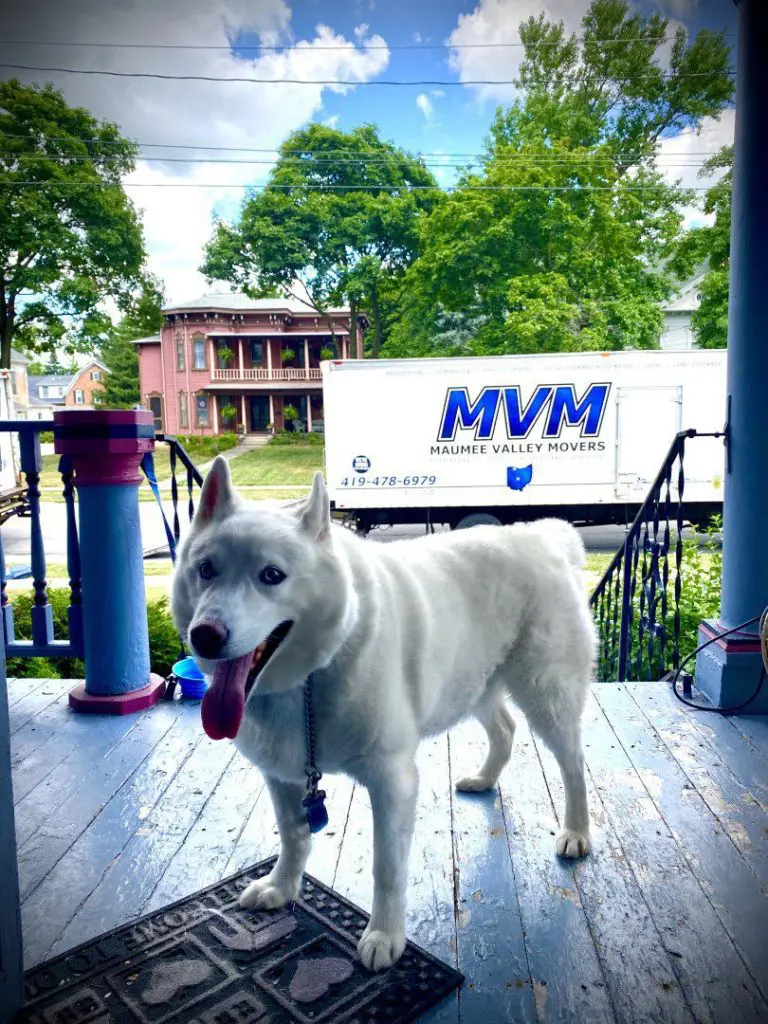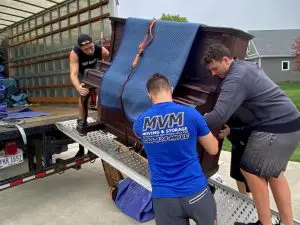Moving with Pets

Whether your favorite animal has fur, feathers, fins, or fangs, figuring out the best way to transport your pet should be at the top of your moving checklist.
Just as moving can be stressful for humans, it can also take a toll on your furry friends. New surroundings, strange people, the motion of being transported, and overall chaotic circumstances are not going to be anticipated by your pet, which is why it is important to consider each phase in how to move pets.
Preparing Pets for Moving Day
Just as you’ve been preparing the rest of your family for the move in the weeks and months before the transition, you should also follow these tips to prepare your pets before moving day.
- Talk to your vet. Consult with your animal’s doctor for advice on how to make the move as stress-free for your pet as possible. If you are moving too far for you to keep using your existing vet, get recommendations on who to use at the new location and obtain copies of all of your pet’s records to take with you to give to the office.
- Pack a bag for your pet. Just like we encourage families to keep a dedicated backpack for each person in the family on moving day, do the same for each pet. Make sure to include:
- Food
- Water dish
- Leash
- Favorite toy
- Medicine
- Treats
- Potty pads, if necessary
- Paperwork on immunizations and licensing
- Help dogs and cats adjust to a crate. If your dog or cat is not crate-trained, you do not want their first experience in a crate to be on moving day. In the weeks prior to moving, fill a crate with their favorite toys and blankets and have them spend time adjusting. You can even drive them around the neighborhood a few times while they are in the crate before moving day.
- Search for pet-friendly hotels. If your move requires a multi-day trip, call ahead to find out which hotels are pet-friendly.
- Have a plan for food and water breaks. You should not leave your pet unattended in the car when the family needs to stop for food, water, or restroom breaks. Always have one person stay with your pet at any stops.
Transporting Pets During the Move
As animal-friendly as we are at MVM, we want your pets to be as comfortable and as safe as possible, which means we want them with the people who know their behaviors best: you! That’s why we recommend you keep your pet with you when you move, in addition to following these safety tips:
- Do not put your pets in the front seat. It is best to have your dog or cat in a secured crate, and having someone sit next to it both relieves your pet’s anxiety and ensures the crate remains in place.
- Prepare to stop at rest areas along the way. Your dog or cat will need breaks for longer distance moves, so visit rest stops where your pet can get some exercise.
- Keep their food and medicine close by. It can be easy to toss a bag of dog food in with the other laundry room items to be packed, only to discover that it is buried in the moving truck later, when your dog or cat is whimpering for food.
- Consider leaving your pet with a trusted friend or family member during the actual move. Chances are you are not going to have a lot of time to dedicate to your pet when you are also directing movers on where to place your items, and the doors will likely be propped open or frequently opened and closed, creating a risk that your dog or cat could escape.
Helping Pets Adjust to Their New Home
Once your pet has arrived safely at their new home, it’s important to continue helping ease the transition by paying them special attention as they adjust to their new environment.
- Update your animal’s microchip and license information to reflect your new address and veterinarian. If your pet is lost, it needs to have the most up-to-date information so you can be contacted.
- Help your pet feel at home in the new space. It can be just as odd for a new animal to move into a new home as it is for humans. Giving them a dedicated area with a lot of familiar items from the old place (blankets, pillows, toys, music) can eliminate stress and (hopefully!) prevent accidents.
Moving Guides
Free, no obligation estimates for moving and storage
Our moving estimates are carefully customized to your unique moving needs and ensure the highest level of accuracy, and our relocation team has over 100 years of combined moving experience.




Locations in Ohio, Indiana, and Florida